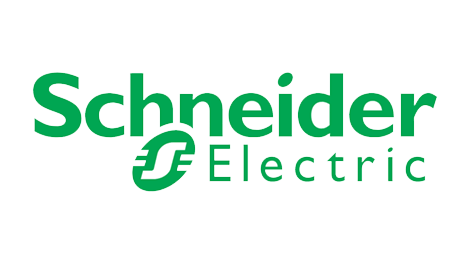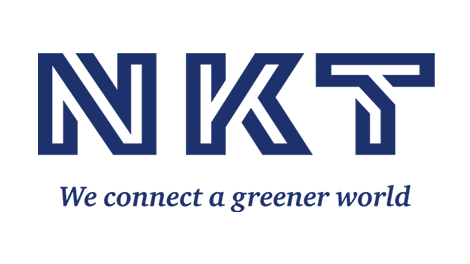Schneider Electric – Schneider Electric and GreenYellow join forces to provide commercial and industrial microgrid solutions across Europe
 Microgrid solutions require no upfront capital investment, cut energy costs, while improving energy resilience and sustainability
Microgrid solutions require no upfront capital investment, cut energy costs, while improving energy resilience and sustainability
Schneider Electric, the leader in the digital transformation of energy management and automation, has partnered with GreenYellow, an expert in decentralized solar power generation and energy efficiency solutions, to announce a new Energy-as-a-Service (EaaS) microgrid solution.
It is aimed for small and medium-sized businesses in the commercial and industrial (C&I) sectors such as: retail stores, logistics centers, commercial buildings, as well as manufacturing plants, breweries and dairies, etc. Across Europe, microgrids will empower businesses to take control of their energy costs, increase their energy security and accelerate their path towards sustainability. Delivered as a service, this solution will provide companies with all the benefits of a microgrid while sparing them the upfront investment that is usually required.
The new offer comes amidst soaring energy costs across Europe and ahead of potential significant shortages in winter 2023-24 that may lead to a high risk of rolling blackouts.
- In August 2022, the cost of French power hit 900 euros per megawatt-hour. More than ten times the price at this time a year earlier (Bloomberg).
- In Spain, electricity bills reached €158.26 in August 2022, a year-on-year increase of 70% (FACUO).
- European electricity price volatility in 2022 was on average six times higher than in 2020 and more than doubled compared to 2021 (Ffe).
Little wonder, then, that a recent report by PwC found that 40% of global CEOs identified the transition to new energy sources as the factor most likely to impact industry profitability over the next ten years.
Microgrids replace expensive, carbon-intensive electricity purchased from the grid with clean, self-generated and environmentally-friendly power sourced as solar photovoltaics (PV). Battery storage further increases the flexibility of PV usage, which lowers costs and reduces carbon emissions. Savings can also be made by leveraging advanced system controls and smart algorithms to optimize the operation of the local energy plant and determine whether and when energy should be used or stored. Furthermore, by helping to ensure facilities are provided with a consistent supply of power in the event of grid outages or extreme weather events, microgrids enhance energy resilience.
The partnership between Schneider Electric and GreenYellow provides end-to-end support for businesses seeking to integrate microgrids into their operations. Schneider and GreenYellow will analyze and assess a business’ data to optimize the grid’s implementation, including load profiles, energy demand and supply structure, as well as underlying price and tariff structure to design optimized microgrid solutions.
The companies will provide the PV panels, the battery energy storage system, electrical distribution, controls of the complete system, as well as ongoing service of the microgrid. GreenYellow will operate the microgrid system, while Schneider will optimize it using operational data. Together, they will supply a comprehensive solution equipping businesses to more easily access and benefit fully from the manifold advantages of microgrids.
“Commercial and industrial businesses are an engine of the European economy and yet they are struggling to survive because they cannot afford the cost of energy, ” said Philippe Delorme, Schneider Electric’s EVP of European Operations. “Our new microgrid offering will enable them to take back control and manage their costs effectively. Businesses will have a reliable supply of affordable, clean energy to maintain operations while meeting their decarbonization targets”.
“PV generation has grown significantly and is on track to outperform the goal of reaching 430GW by 2030. With a quarter of that energy generated from roofs, parking lots and other assets belonging to commercial and industrial businesses, microgrids are a great way to optimize energy usage. And without upfront investment, it’s a win-win for most businesses,” said Otmane Hajji, CEO, GreenYellow.
The service will be immediately available in France, Spain, Portugal, and Eastern Europe, with additional countries, such as Germany along with parts of Benelux and the Nordics to follow soon after. The announcement is an extension of the existing partnership between Schneider Electric and GreenYellow in the space of energy performance contracting.
Source
Schneider Electric
EMR Analysis
More information on Schneider Electric: See the full profile on EMR Executive Services
More information on Jean-Pascal Tricoire (Chairman and CEO, Schneider Electric until 04.05.2023 + Chairman, Schneider Electric as from 04.05.2023): See the full profile on EMR Executive Services
More information on Peter Herweck (Chief Executive Officer, AVEVA + Chief Executive Officer, Schneider Electric as from 04.05.2023): See the full profile on EMR Executive Services
More information on Philippe Delorme (Member of the Executive Committee at Schneider Electric and Executive Vice-President Europe Operations, Schneider Electric): See the full profile on EMR Executive Services
More information on the GreenYellow: https://fr.greenyellow.com/en + The GreenYellow model is based on a disruptive idea: to enhance unused spaces of our clients by installing solar panels, and focus our development on green and local energy.
Since then, we have expanded our expertise to become the energy partner for businesses and institutions and we continue to expand internationally and to diversify our customer base.
More information on Otmane Hajji (President, GreenYellow): https://fr.greenyellow.com/en/about-us/management-team + https://www.linkedin.com/in/otmane-hajji/
More information on Bloomberg: https://www.bloomberg.com/ + Bloomberg, the global business and financial information and news leader, gives influential decision makers a critical edge by connecting them to a dynamic network of information, people and ideas. The company’s strength — delivering data, news and analytics through innovative technology, quickly and accurately — is at the core of the Bloomberg Terminal. Bloomberg’s enterprise solutions build on the company’s core strength: leveraging technology to allow customers to access, integrate, distribute and manage data and information across organizations more efficiently and effectively.
More information on FACUO: https://www.facua.org/ + FACUA transparency portal. Here you can access the association’s institutional, organizational and financial information.
FACUA-Consumers in Action is a non-governmental, non-profit organization dedicated since its origins, in 1981, to the defense of consumer rights.
Independent of governments, political parties, religious denominations and business interests, FACUA has a markedly progressive, democratic, plural and participatory character.
More information on Ffe: https://www.facua.org/ + For more than 70 years we have been working independently and in an energy carrier-neutral manner on relevant energy technology and energy industry topics.
We are young and dynamic! Flat hierarchies between management and staff ensure a collegial working atmosphere. The scientific advisory boards support us professionally while our administration and IT form our backbone. Together we work with team spirit on the vision of a climate-neutral energy future.
More information on Dr.-Ing. Serafin von Roon (Managing Director and Deputy Scientific Director, Ffe): https://www.ffe.de/en/team/dr-ing-serafin-von-roon/ + https://www.linkedin.com/in/serafinvonroon/
More information on PwC Group: https://www.pwc.com/ + Building trust in society and solving important problems.
With offices in 156 countries and more than 295,000 people, we are among the leading professional services networks in the world. We help organisations and individuals create the value they are looking for, by delivering quality in Assurance, Tax and Advisory services. Some facts about PwC:
In FY21, PwC firms provided services to 84% of the Global Fortune 500 companies
90,273 people joined PwC firms around the world in FY21
For the year ending 30 June 2021, PwC’s gross revenues were US$45 billion.
More information on Robert Moritz (Global Chairman, PricewaterhouseCoopers International Limited, PWC): https://www.pwc.com/gx/en/contacts/b/bob-moritz.html + https://www.linkedin.com/in/robertemoritz/
EMR Additional Notes:
- Grid, Microgrids and DERs:
- The power grid is a network for delivering electricity to consumers. The power grid includes generator stations, transmission lines and towers, and individual consumer distribution lines.
- The grid constantly balances the supply and demand for the energy that powers everything from industry to household appliances.
- Electric grids perform three major functions: power generation, transmission, and distribution.
- A microgrid is a small-scale power grid that can operate independently or collaboratively with other small power grids. The practice of using microgrids is known as distributed, dispersed, decentralized, district or embedded energy production.
- Smart Grid is any electrical grid + IT at all levels . Micro Grid is a group of interconnected loads and DERs (Distributed energy resources) within a clearly defined electrical and geographical boundaries witch acts as a single controllable entity with respect to the main grid.
- Distributed energy resources (DERs) are small-scale electricity supply (typically in the range of 3 kW to 50 MW) or demand resources that are interconnected to the electric grid. They are power generation resources and are usually located close to load centers, and can be used individually or in aggregate to provide value to the grid.
- Common examples of DERs include rooftop solar PV units, natural gas turbines, microturbines, wind turbines, biomass generators, fuel cells, tri-generation units, battery storage, electric vehicles (EV) and EV chargers, and demand response applications.





